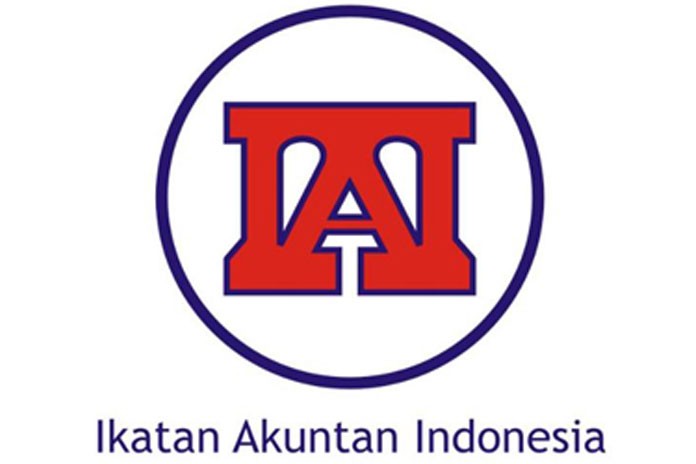DAMPAK IMPLEMENTASI ERP TERHADAP KAPABILITAS ORGANISASI DAN KINERJA PERUSAHAAN
Abstract
This study purposes to examine whether ERP implementation has an impact on business strategy and company capabilities that can improve company performance. Specifically, this study investigates the mediating effects of business strategies and organizational capabilities in relation to ERP implementation and company performance. This study uses secondary data from 53 companies that meet the requirements and examine the relationship between these variables. ERP implementation has a positive impact when the company implements a prospector business strategy. The prospector strategy business enhances the company's ability to achieve company capabilities and enables companies to achieve better financial performance. ERP implementation encourages and encourages prospector strategies. ERP not only supports cost control, but also supports decision making, develops new products and innovations that drive revenue growth, and build effective and efficient operations that increase return on assets.
Full Text:
PDFReferences
Barney, J. (1991), “Firm resources and sustained competitive advantage”, Journal of Management, Vol. 17 No. 1, pp. 99-120.
Brockman, B.K. and Morgan, R.M. (2003), “Role of existing knowledge in new product innovativeness and performance”, Decision Sciences, Vol. 34 No. 2, pp. 385-419.
Chung, W.W., Ko, C.C., Cheung, E.W. and Wong, T.C. (2007), “IT-enhanced order and delivery process of a fast moving consumer goods (FMCG) company: a case study”, Benchmarking: An International Journal, Vol. 14 No. 1, pp. 123-39.
Dechow, N. and Mouritsen, J. (2005), “Enterprise resource planning systems, management control and the quest for integration”, Accounting, Organizations and Society, Vol. 30, pp. 691-733.
Desarbo, W.S., Di Benedetto, C.A., Song, M. and Sinha, I. (2005), “Revisiting the miles and snow strategic framework: uncovering interrelationships between strategic types, capabilities, environmental uncertainty, and firm performance”, Strategic Management Journal, Vol. 26, pp. 47-74.
Feltham, G.A. and Xie, J. (1994), “Performance measures congruity and diversity in multi-task principal/agent relations”, The Accounting Review, Vol. 69, pp. 429-53.
Green, S.G. and Welsh, M.A. (1988), “Cybernetics and dependence: reframing the control concept”, Academy of Management Review, Vol. 13 No. 2, pp. 287-301.
Grice, J. and Harris, R. (1998), “A comparison of regression and loading weights for the computation of factor scores”, Multivariate Behavioral Research, Vol. 33 No. 2, pp. 221-47.
Hambrick, D.C. (1983), “Some tests of the effectiveness and functional attributes of miles and snow’s strategic types”, Academy of Management Journal, Vol. 26, pp. 5-25.
Hayes, D.C., Hunton, J.E. and Reck, J.L. (2001), “Market reaction to ERPS implementation announcements”, Journal of Information System, Vol. 15 No. 1, pp. 3-18.
Holmberg, S. (2000), “A systems perspective on supply chain measurements”, International Journal of Physical Distribution & Logistics Management, Vol. 30 No. 10, pp. 847-68.
Hong, P.C., Dobrzykowski, D.D. and Vonderembse, M.A. (2010), “Integration of supply chain IT and lean practices for mass customization”, Benchmarking: An International Journal, Vol. 17 No. 4, pp. 561-92.
Horvath, L. (2001), “Collaboration: the key to value creation in supply chain management”, Supply Chain Management: An International Journal, Vol. 6 No. 5, pp. 205-7.
Hunton, J.E., Lippincott, B. and Reck, J.L. (2003), “Enterprise resource planning (ERP) systems: comparing firm performance of adopters and non-adopters”, International Journal of Accounting Information Systems, Vol. 4 No. 3, pp. 165-84.
Hunton, J.E., McEwen, R.A. and Wier, B. (2002), “The reaction of financial analysts to enterprise resource planning (ERP) implementation plans”, Journal of Information System, Vol. 16 No. 1, pp. 31-40.
Ittner, C.D., Larcker, D.F. and Rajan, M.V. (1997), “The choice of performance measures in annual bonus contracts”, The Accounting Review, Vol. 72, pp. 231-55.
Kekre, S. and Srinivasan, K. (1990), “Broader product line: a necessity to achieve success?”, Management Science, Vol. 36 No. 10, pp. 1216-31.
Klein, R. (2007), “Customization and real time information access in integrated eBusiness supply chain relationships”, Journal of Operations Management, Vol. 25 No. 6, pp. 1366-81.
Langfield-Smith, K. (1997), “Management control systems and strategy: a critical review”, Accounting, Organizations and Society, Vol. 22 No. 2, pp. 207-32.
Larcker, D., Richardson, S. and Tuna, I. (2007), “Corporate governance, accounting outcomes, and organizational performance”, The Accounting Review, Vol. 82 No. 4, pp. 963-1008.
Law, C.C. and Ngai, E.W. (2007), “An investigation of the relationships between organizational factors, business process improvement, and ERP success”, Benchmarking: An International Journal, Vol. 14 No. 3, pp. 387-406.
Leung, S. and Lee, W.B. (2004), “Strategic manufacturing capability pursuance: a conceptual framework”, Benchmarking: An International Journal, Vol. 11 No. 2, pp. 156-74.
Lo, C. and Wang, J. (2007), “The relationships between defender and prospector business strategies and organizational performance in two different industries”, International Journal of Management, Vol. 24 No. 1, pp. 174-83.
Luft, J.L. (2004), “Discussion of managers’ commitment to the goals contained in a strategic performance measurement system”, Contemporary Accounting Research, Vol. 21 No. 4, pp. 928-58.
Markus, M.L. and Robey, D. (1998), “Information technology and organizational change: causal structure in theory and research”, Management Science, Vol. 34 No. 5, pp. 583-99.
Masini, A. and van Wassenhove, L.N. (2009), “ERP competence-building mechanisms: a exploratory investigation of configurations of ERP adopters in the European and US manufacturing sectors”, Manufacturing and Service Operations Management, Vol. 11 No. 2, pp. 274-98.
Miles, R.E. and Snow, C.C. (1978), Organizational Strategy, Structure, and Process, McGraw Hill, New York.
Moorman, C. and Miner, A. (1997), “The impact of organizational memory on new product performance and creativity”, Journal of Marketing Research, Vol. 34, pp. 91-106.
Nunnally, J. (1967), Psychometric Theory, McGraw-Hill, New York, NY.
Nunnally, J.C. (1978), Psychometric Theory, 2nd ed., McGraw-Hill, New York, NY.
Peng, D.X., Schroeder, R.G. and Shah, R. (2008), “Linking routines to operations capabilities: a new perspective”, Journal of Operations Management, Vol. 26, pp. 730-48.
Porter, M.E. and Millar, V.E. (1985), “How information gives you competitive advantage”, Harvard Business Review, Vol. 63 No. 4, pp. 149-60.
Poston, R. and Grabski, S. (2001), “Financial impact of enterprise resource planning implementations”, International Journal of Accounting Information Systems, Vol. 2 No. 4, pp. 271-94.
Said, A.A., HassabElnaby, H.R. and Wier, B. (2003), “An empirical investigation of the performance consequences of nonfinancial measures”, Journal of Management Accounting Research, Vol. 15, pp. 193-223.
Sethi, V. and King, W.R. (1994), “Development of measures to assess the extent to which an information technology application provides competitive advantage”, Management Science, Vol. 40 No. 12, pp. 1601-27.
Shang, S. and Seddon, P.B. (2002), “Assessing and managing the benefits of enterprise systems: the business manager’s perspective”, Information Systems Journal, Vol. 12, pp. 271-99.
Snow, C.C. and Hrebiniak, L. (1980), “Strategy, distinctive competence, and organizational performance”, Administrative Science Quarterly, Vol. 25, pp. 317-35.
Stevens, J.R. (1992), Applied Multivariate Statistics for the Social Sciences, 2nd ed., Academic Press, New York, NY.
Suwardy, T., Ratnatunga, J. and Sohal, A.S. (2003), “IT projects: evaluation, outcomes and impediments”, Benchmarking: An International Journal, Vol. 10 No. 4, pp. 325-42.
Sweat, J. (1998), “ERP: enterprise application suites are becoming a focal point of business and technology planning”, Information Week, Vol. 704, pp. 42-52.
Teece, D.J., Pisano, G. and Shuen, A. (1997), “Dynamic capabilities and strategic management”, Strategic Management Journal, Vol. 18 No. 7, pp. 509-33.
Thomas, A., Litschert, R. and Ramaswamy, K. (1991), “The performance impact of strategy-manager coalignment: an empirical examination”, Strategic Management Journal, Vol. 12, pp. 509-22.
Trott, P. and Hoecht, A. (2004), “Enterprise resource planning and its impact on innovation”, International Journal of Innovation Management, Vol. 8 No. 4, pp. 257-70.
Tsai, W., Chen, S., Hwang, E.T. and Hsu, J. (2010), “A study of the impact of business process on the ERP system effectiveness”, International Journal of Business and Management, Vol. 5 No. 9, pp. 26-37.
Vancouver, J.B. (1996), “Living systems theory as a paradigm for organizational behavior: understanding humans, organizations, and social processes”, Behavioral Science, Vol. 41 No. 3, pp. 165-204.
Vuong, Q.H. (1989), “Likelihood ratio tests for model selection and non-nested hypotheses”, Econometrica, Vol. 57, pp. 307-33.
Wier, B., Hunton, J. and HassabElnaby, H.R. (2007), “Enterprise resource planning systems and non-financial performance incentives: the joint impact on corporate performance”, International Journal of Accounting Information Systems, Vol. 8 No. 3, pp. 165-90.
DOI: http://dx.doi.org/10.35448/jrat.v11i2.4263
Refbacks
- There are currently no refbacks.
pISSN 1979-682X eISSN 2528-7443
Jurnal Riset Akuntasi Terpadu (JRAT) is licensed under a Creative Commons Attribution 4.0 International License







